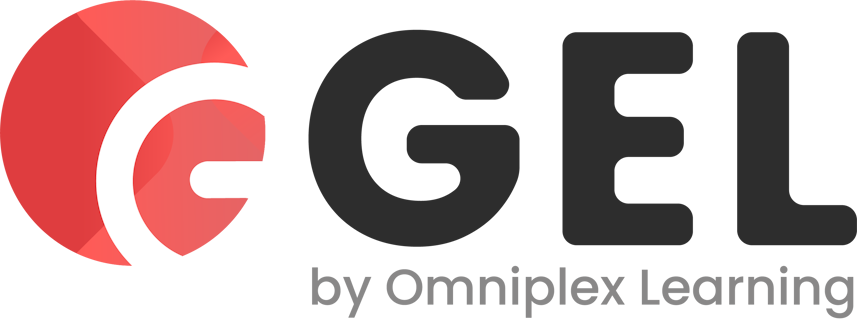Change management is always a complex process, regardless of its scale. Implementing changes within a business for whatever reason can create disruption and resistance. But being able to enjoy long-term benefits requires taking the time to guarantee and sustain support from employees, stakeholders, and everyone in between. Most importantly, transformation initiatives require clarity of purpose and a well-defined approach to measuring success.
That being said, there is no question that managing change becomes more difficult on a large scale. There are more variables to consider, a greater need for stamina, and, of course, a lot more that can go wrong. Failed change programs can quickly result in wasted resources and employee fatigue, and even ‘successful’ programs can fail if employees see no reason to take changes on board permanently.
Regardless of the difficulty, complex change initiatives are happening far more frequently in businesses around the world. Risks and opportunities are appearing more often in today’s markets, and businesses with the capacity to undertake and sustain organizational change have the potential to enjoy major gains in terms of reputation and ROIs. Events like the COVID-19 pandemic have also stressed the need for embedded change management practices in case of unforeseen challenges.
While complex change programs are becoming more common, the question of how to manage them has been popular in both corporate and academic circles for several decades. There is a strong consensus that businesses cannot simply apply a prescriptive model in all cases, as the requirements for transformation initiatives can vary considerably even within a single company. Indeed, even change frameworks like AgileSHIFT and APMG Change Management acknowledge the need for a varied approach that considers key factors separately.
So, what exactly does it take for a business to optimize its approach to complex change management?
How to evaluate a change management process
As with any approach within a business, change management processes ought to evolve with time. Even a well-integrated approach can fall short if it fails to consider new technology, best practices, environmental factors, and so on. As a business scales up, it may also find an old transformation process inadequate for its needs.
Consider these questions on how your business has performed in previous initiatives:
- Have past change programs led to permanent improvements?
- How were the purposes and benefits of initiatives communicated?
- What support was offered to employees at different levels?
- How did you assess the success of your change initiatives?
- What kind of resistance did you encounter, and from where?
- Did you conduct pilots before attempting to scale complex changes?
- Did you utilize a best practice framework? If so, how many employees were trained to understand and utilize it?
- How present and effective was your organization’s leadership?
- How frequently did you celebrate milestones with employees?
To fully understand and improve your approach to change management, it is also worth considering the fact that the success of an initiative cannot be judged simply by measuring ROIs. Change ultimately affects people, and how you deal with employees, managers, stakeholders, and others in your organization will almost always be the deciding factor in how successful and permanent your proposed changes are in practice.

What should my biggest priorities be for managing complex change?
- Have a strong theme – For complex transformation programs to succeed, everyone needs to understand the big picture. What’s the reason for the program? What about the individual change projects that make it up? Giving everyone from ground-level employees to high-level executives a clear vision will enhance both governance and enthusiasm throughout the program. The most successful companies will often also have senior leaders take charge of championing the ‘cause’, so to speak. Given that complex change initiatives can often take several years to complete, it can be easy for staff to switch their focus to short-term tasks if they don’t have a theme to guide them.
- Empower your staff – Too many businesses make the mistake of treating change as a top-down affair. The best way to get employees to support change is to let them take ownership of their own contribution. In practice, this means giving them a personal stake in helping initiatives succeed. This can include clarifying roles and responsibilities, as well as selecting managers who can keep their teams motivated. At times, reassuring teams of their contribution can even require coaching and training. You will also need to let staff know that their own requirements are being taken into consideration by having stakeholders and managers address concerns. With greater enthusiasm and cohesion, you will find it far easier to sustain your initiatives and solidify significant changes.
- Establish clear performance metrics – As we said previously, this is not just about measuring your end results. The best way to monitor the health of your program will be to judge initiatives incrementally, not just in terms of speed but also health-related metrics such as quality, communication, and engagement. If employees are falling short with individual tasks, find out why! Don’t take too long between evaluations, either, or you will risk issues slipping under the radar. To boost motivation, you may also want to make it a point to celebrate milestones and reward employees for their contributions.
- Test before scaling up – If you want your change initiative to succeed, the worst thing you can do is be heavy-handed with implementation. Successfully trialing changes in a single area is hardly justification for immediately attempting the same throughout a complex organization, especially if there are multiple locations, team sizes, workplace cultures, and similar factors to consider. Instead, use multiple pilots, each geared towards the instance in question. You should also ensure pilots don’t receive more support than you will see in general implementation, or you may be surprised with the results. The most important thing will be to have a process for change implementation that can be adapted on a case-by-case basis.
- Specify your endpoint – Here, we’re going to take a lesson from enterprise architecture. Before starting a complex change program, you must consider both the current and future states of your organization. This will help determine what actions are required to get from A to B, as well as what resources you will need. This can also add tangibility to the theme of your transformation initiative and make it easier to plan incremental stages.
- Communicate, communicate, communicate – Communication serves multiple purposes within a change initiative. First, being able to communicate across the organization will help everyone understand the reasons for change and check for updates. Second, having well-established communication channels will ensure changes can take place quickly and easily and that the right people can be alerted to issues as they appear. At the start of your program, it will be important to clarify communication channels for different levels. For example, you may want to invest in a subscription for a messaging platform like Slack or Microsoft Teams or even a scheduling tool like Monday. At the same time, you should also keep communication bespoke, altering your message depending on the seniority and unique interests of whoever you are dealing with. This way, communication can be a major help in alleviating potential resistance to change.
- Prioritize continuity – You may have created a comprehensive plan to utilize your company’s resources and get the full backing of stakeholders. But before you get started, ask yourself just one thing: what about daily value-generating tasks and projects separate from your initiative? You cannot afford to have your change program get in the way of business operations. This is a surefire way to create resistance, especially from stakeholders who take value from daily operations. Take this into account during the planning stage and make an effort to reassure employees that you will not be making their jobs harder. The more you take these concerns on board, the smoother your transition will be.

Studying change management with Good e-Learning
Good e-Learning is an award-winning online training provider covering a range of frameworks, including APMG Change Management, AgileSHIFT, PRINCE2, and more. We work with subject matter experts to provide training experiences that offer practical advice, preparing students not only for exams but also real-world scenarios and daily tasks.
Each of our courses comes with several learning assets that can help with retention before an exam. These include instructor-led videos, practice exams, and regular knowledge checks. Our support team is fully qualified to answer questions relating to any course syllabus, and we even offer both FREE exam vouchers and free resits via Exam Pledge. Customers can also access our courses from any web-enabled device using the free Go.Learn app.

Want to find out more? Visit the Good e-Learning website, or contact a member of our team today!

